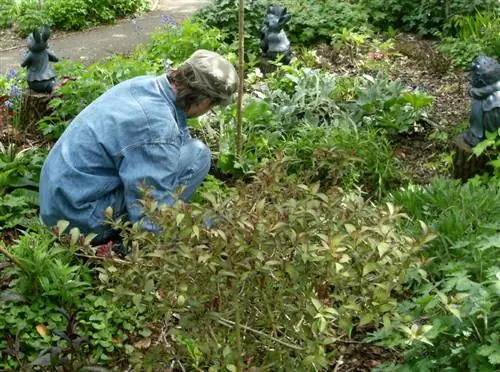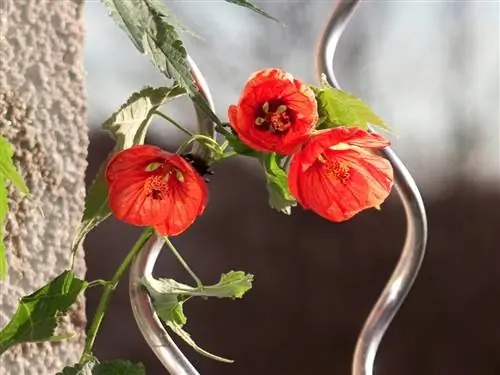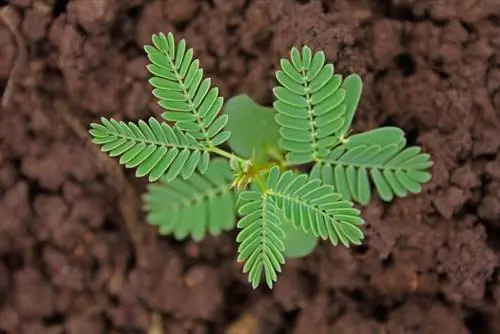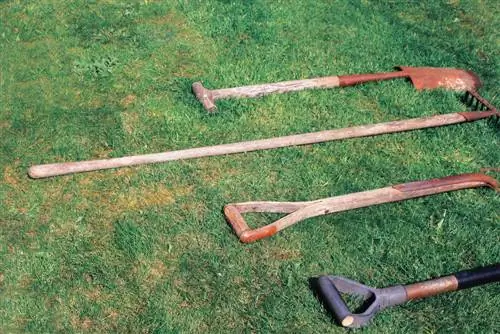- Author admin [email protected].
- Public 2023-12-16 16:46.
- Last modified 2025-01-23 11:20.
Palm trees exude a Mediterranean flair and are extremely popular houseplants due to their interesting growth and biodiversity. If you own a particularly beautiful or rare specimen, you often want to propagate it. Depending on the species, this actually works relatively well.

How to propagate palm trees?
To propagate palm trees, you can use either seeds or side shoots. When propagating seeds, you need to soak the seeds, plant them in pest-free substrate and ventilate them daily. When propagating through side shoots, carefully separate them as soon as they have four fronds of their own and place them in palm soil.
Breeding by seeds
Whether the attempt is successful depends largely on the type of palm tree. Some palm trees don't grow quite quickly, but others need up to a year for the seed to develop into a new plant.
You will need a little patience to try it:
- Palm seeds, which you can get from palm growers or specialist retailers.
- A container filled with potting soil.
- A warm, bright place on the windowsill.
Then do the following:
- Soak seeds in water for a few days.
- Because of the long germination time, place in a guaranteed pest-free substrate such as perlite or coco-hum.
- Place the very large coconuts with the three sprouting points facing down into a large pot so that the top half protrudes from the substrate.
- Put a clear plastic bag over the plant pot.
- Keep well moist and ventilate daily to prevent mold and rot.
- Place in a very warm place. Palm trees that thrive in cooler regions also germinate at room temperature, whereas tropical species require significantly warmer temperatures.
Propagate palm trees through side shoots
This only works with very few species, namely those that form lateral shoots. If they have four fronds of their own, you can cut them off in the spring with a sharp knife and place them in a small pot filled with palm soil.
Cover the cuttings with a plastic bag to create a greenhouse climate and place the small palm tree in a bright, warm but not full sun place. The optimal temperature is around 22 degrees. Don't forget to ventilate daily.
As soon as the small palm tree produces another frond, you know that your efforts have been successful. Roots have formed and the plastic bag can be removed.
Share palm trees
Many house and garden plants can be propagated using this method. Unfortunately, this is not the case with palm trees, as only one main shoot grows out of the root ball. Above the trunk, which is formed by the dead and fallen leaves, is the heart of the palm with the crest-like fan or pinnate leaves that give the plants their characteristic appearance.
Cuttings cannot be cut from the palm tree either and trying to propagate the plant in this way is unfortunately pointless.
Tip
You can also get seeds yourself as palm fruits, for example from dates offered for consumption. Another good way to get seeds is on vacation. Collect fallen fruits and remove the seeds from them to plant in the soil at home.






